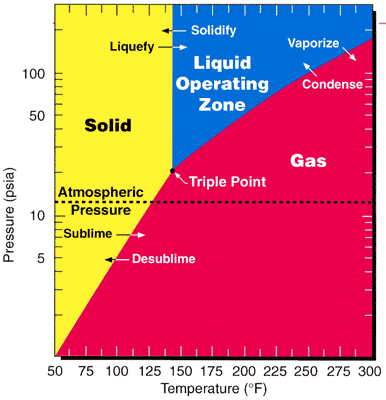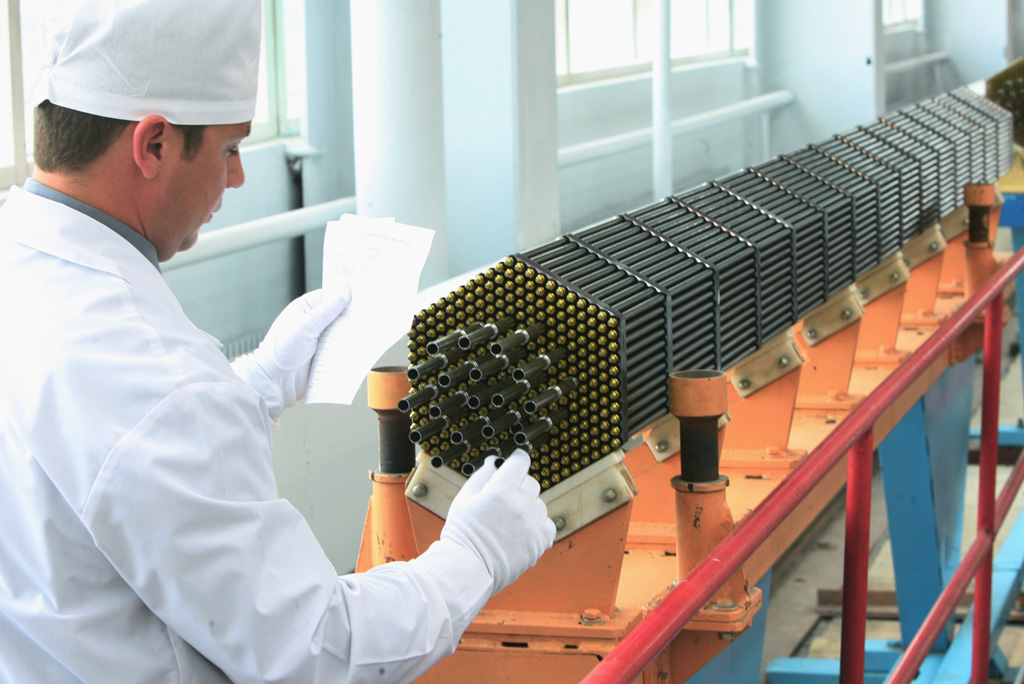|
Americium Hexafluoride
Americium hexafluoride is an inorganic chemical compound of americium metal and fluorine with the chemical formula . It is still a hypothetical compound A hypothetical chemical compound is a chemical compound that has been conceived of, but is not known to have been synthesized, observed, or isolated (identified or shown to exist). Some hypothetical compounds cannot form at all. Others might tur .... Synthesis It is proposed that can be prepared by in both the condenced and gaseous states by the reaction of with in anhydrous HF at 313–333 °K. :: References Americium compounds Fluorine compounds Metal halides Hexafluorides Hypothetical chemical compounds Theoretical chemistry {{inorganic-compound-stub ... [...More Info...] [...Related Items...] OR: [Wikipedia] [Google] [Baidu] |
Uranium Hexafluoride
Uranium hexafluoride (), (sometimes called "hex") is an inorganic compound with the formula UF6. Uranium hexafluoride is a volatile white solid that reacts with water, releasing corrosive hydrofluoric acid. The compound reacts mildly with aluminium, forming a thin surface layer of AlF3 that resists any further reaction from the compound. UF6 is used in the process of enriching uranium, which produces fuel for nuclear reactors and nuclear weapons. Preparation Milled uranium ore—U3O8 or "yellowcake"—is dissolved in nitric acid, yielding a solution of uranyl nitrate UO2(NO3)2. Pure uranyl nitrate is obtained by solvent extraction, then treated with ammonia to produce ammonium diuranate ("ADU", (NH4)2U2O7). Reduction with hydrogen gives UO2, which is converted with hydrofluoric acid (HF) to uranium tetrafluoride, UF4. Oxidation with fluorine yields UF6. During nuclear reprocessing, uranium is reacted with chlorine trifluoride to give UF6: :U + 2 ClF3 → UF6 + Cl2 Prope ... [...More Info...] [...Related Items...] OR: [Wikipedia] [Google] [Baidu] |
Inorganic
In chemistry, an inorganic compound is typically a chemical compound that lacks carbon–hydrogen bonds, that is, a compound that is not an organic compound. The study of inorganic compounds is a subfield of chemistry known as '' inorganic chemistry''. Inorganic compounds comprise most of the Earth's crust, although the compositions of the deep mantle remain active areas of investigation. Some simple carbon compounds are often considered inorganic. Examples include the allotropes of carbon (graphite, diamond, buckminsterfullerene, etc.), carbon monoxide, carbon dioxide, carbides, and the following salts of inorganic anions: carbonates, cyanides, cyanates, and thiocyanates. Many of these are normal parts of mostly organic systems, including organisms; describing a chemical as inorganic does not necessarily mean that it does not occur within living things. History Friedrich Wöhler's conversion of ammonium cyanate into urea in 1828 is often cited as the starting point of modern ... [...More Info...] [...Related Items...] OR: [Wikipedia] [Google] [Baidu] |
Americium
Americium is a synthetic radioactive chemical element with the symbol Am and atomic number 95. It is a transuranic member of the actinide series, in the periodic table located under the lanthanide element europium, and thus by analogy was named after the Americas. Americium was first produced in 1944 by the group of Glenn T. Seaborg from Berkeley, California, at the Metallurgical Laboratory of the University of Chicago, as part of the Manhattan Project. Although it is the third element in the transuranic series, it was discovered fourth, after the heavier curium. The discovery was kept secret and only released to the public in November 1945. Most americium is produced by uranium or plutonium being bombarded with neutrons in nuclear reactors – one tonne of spent nuclear fuel contains about 100 grams of americium. It is widely used in commercial ionization chamber smoke detectors, as well as in neutron sources and industrial gauges. Several unusual applications, such as nu ... [...More Info...] [...Related Items...] OR: [Wikipedia] [Google] [Baidu] |
Fluorine
Fluorine is a chemical element with the symbol F and atomic number 9. It is the lightest halogen and exists at standard conditions as a highly toxic, pale yellow diatomic gas. As the most electronegative reactive element, it is extremely reactive, as it reacts with all other elements except for the light inert gases. Among the elements, fluorine ranks 24th in universal abundance and 13th in terrestrial abundance. Fluorite, the primary mineral source of fluorine which gave the element its name, was first described in 1529; as it was added to metal ores to lower their melting points for smelting, the Latin verb meaning 'flow' gave the mineral its name. Proposed as an element in 1810, fluorine proved difficult and dangerous to separate from its compounds, and several early experimenters died or sustained injuries from their attempts. Only in 1886 did French chemist Henri Moissan isolate elemental fluorine using low-temperature electrolysis, a process still employed for modern pr ... [...More Info...] [...Related Items...] OR: [Wikipedia] [Google] [Baidu] |
Hypothetical Compound
A hypothetical chemical compound is a chemical compound that has been conceived of, but is not known to have been synthesized, observed, or isolated (identified or shown to exist). Some hypothetical compounds cannot form at all. Others might turn out to be highly unstable, decomposing, isomerizing, polymerizing, rearranging, or disproportionating. Some are thought to exist only briefly as reactive intermediates, or in vacuum (e.g. helium hydride ion). Some cannot hold together due to steric hindrance (e.g. tetra-''tert''-butylmethane) or bond stress (e.g. tetrahedrane). Some have no known pathway for synthesis (e.g. hypercubane). Some compounds of radioactive elements have never been synthesized due to their radioactive decay and short half-lives (e.g. francium hydroxide) Some "parent compounds" have not been or cannot be isolated, even though stable structural analogs with substituents have been discovered or synthesized (e.g. borole). Hypothetical compounds are oft ... [...More Info...] [...Related Items...] OR: [Wikipedia] [Google] [Baidu] |
Springer Science & Business Media
Springer Science+Business Media, commonly known as Springer, is a German multinational publishing company of books, e-books and peer-reviewed journals in science, humanities, technical and medical (STM) publishing. Originally founded in 1842 in Berlin, it expanded internationally in the 1960s, and through mergers in the 1990s and a sale to venture capitalists it fused with Wolters Kluwer and eventually became part of Springer Nature in 2015. Springer has major offices in Berlin, Heidelberg, Dordrecht, and New York City. History Julius Springer founded Springer-Verlag in Berlin in 1842 and his son Ferdinand Springer grew it from a small firm of 4 employees into Germany's then second largest academic publisher with 65 staff in 1872.Chronology ". Springer Science+Business Media. In 1964, Springer expanded its business internationa ... [...More Info...] [...Related Items...] OR: [Wikipedia] [Google] [Baidu] |
Elsevier
Elsevier () is a Dutch academic publishing company specializing in scientific, technical, and medical content. Its products include journals such as ''The Lancet'', ''Cell'', the ScienceDirect collection of electronic journals, '' Trends'', the '' Current Opinion'' series, the online citation database Scopus, the SciVal tool for measuring research performance, the ClinicalKey search engine for clinicians, and the ClinicalPath evidence-based cancer care service. Elsevier's products and services also include digital tools for data management, instruction, research analytics and assessment. Elsevier is part of the RELX Group (known until 2015 as Reed Elsevier), a publicly traded company. According to RELX reports, in 2021 Elsevier published more than 600,000 articles annually in over 2,700 journals; as of 2018 its archives contained over 17 million documents and 40,000 e-books, with over one billion annual downloads. Researchers have criticized Elsevier for its high profit marg ... [...More Info...] [...Related Items...] OR: [Wikipedia] [Google] [Baidu] |
Krypton(II) Fluoride
Krypton difluoride, KrF2 is a chemical compound of krypton and fluorine. It was the first compound of krypton discovered. It is a volatile, colourless solid at room temperature. The structure of the KrF2 molecule is linear, with Kr−F distances of 188.9 pm. It reacts with strong Lewis acids to form salts of the KrF+ and Kr cations. The atomization energy of KrF2 (KrF2(g) → Kr(g) + 2F(g)) is 21.9 kcal/mol, giving an average Kr–F bond energy of only 11 kcal/mol, the weakest of any isolable fluoride. In comparison, difluorine is held together by a bond of 36 kcal/mol. Consequently, KrF2 is a good source of the extremely reactive and oxidizing atomic fluorine. It is thermally unstable, with a decomposition rate of 10% per hour at room temperature. Krypton difluoride is endothermic, with a heat of formation of 14.4 ± 0.8 kcal/mol measured at 93 °C. Synthesis Krypton difluoride can be synthesized using many different methods including electrical discharge, photoionization ... [...More Info...] [...Related Items...] OR: [Wikipedia] [Google] [Baidu] |
Americium(III) Fluoride
Americium(III) fluoride or americium trifluoride is the chemical compound composed of americium and fluorine with the formula In science, a formula is a concise way of expressing information symbolically, as in a mathematical formula or a ''chemical formula''. The informal use of the term ''formula'' in science refers to the general construct of a relationship betwee ... AmF3. It is a water soluble, pink salt. References Americium compounds Fluorides Actinide halides {{inorganic-compound-stub ... [...More Info...] [...Related Items...] OR: [Wikipedia] [Google] [Baidu] |
Rosatom
Rosatom, ( rus, Росатом, p=rɐsˈatəm}) also known as Rosatom State Nuclear Energy Corporation, the State Atomic Energy Corporation Rosatom or Rosatom State Corporation, is a Russian state corporation headquartered in Moscow that specializes in nuclear energy, nuclear non-energy goods and high-tech products. Established in 2007, the organization comprises more than 350 enterprises, including scientific research organizations, the nuclear weapons complex, and the world's only nuclear icebreaker fleet. The state corporation is one of the largest in the world's nuclear energy industry. The organization ranks first as the largest electricity generating company in Russia, producing 215.746 TWh of electricity, 20.28% of the country's total electricity production. The corporation also ranks first in the overseas NPP construction, responsible for 76% of global nuclear technology exports: 35 nuclear power plant units, at different stages of development, in 12 countries, as of ... [...More Info...] [...Related Items...] OR: [Wikipedia] [Google] [Baidu] |
Americium Compounds
Americium compounds are compounds containing the element americium (Am). These compounds can form in the +2, +3, and +4, although the +3 oxidation state is the most common. The +5, +6 and +7 oxidation states have also been reported. Oxides Three americium oxides are known, with the oxidation states +2 (AmO), +3 (), and +4 (). Americium(II) oxide was prepared in minute amounts and has not been characterized in detail. Americium(III) oxide is a red-brown solid with a melting point of 2205 °C.Wiberg, p. 1972 Americium(IV) oxide is the main form of solid americium which is used in nearly all its applications. Like most other actinide dioxides, it is a black solid with a cubic (fluorite) crystal structure.Greenwood, p. 1267 The oxalate of americium(III), vacuum dried at room temperature, has the chemical formula . Upon heating in vacuum, it loses water at 240 °C and starts decomposing into at 300 °C, the decomposition completes at about 470 °C.Penneman, p. 4 T ... [...More Info...] [...Related Items...] OR: [Wikipedia] [Google] [Baidu] |
Fluorine Compounds
Fluorine forms a great variety of chemical compounds, within which it always adopts an oxidation state of −1. With other atoms, fluorine forms either polar covalent bonds or ionic bonds. Most frequently, covalent bonds involving fluorine atoms are single bonds, although at least two examples of a higher order bond exist. Fluoride may act as a bridging ligand between two metals in some complex molecules. Molecules containing fluorine may also exhibit hydrogen bonding (a weaker bridging link to certain nonmetals). Fluorine's chemistry includes inorganic compounds formed with hydrogen, metals, nonmetals, and even noble gases; as well as a diverse set of organic compounds.In this article, metalloids are not treated separately from metals and nonmetals, but among elements they are closer to. For example, germanium is treated as a metal, and silicon as a nonmetal. Antimony is included for comparison among nonmetals, even though it is closer to metals chemically than to nonmetals. The no ... [...More Info...] [...Related Items...] OR: [Wikipedia] [Google] [Baidu] |





